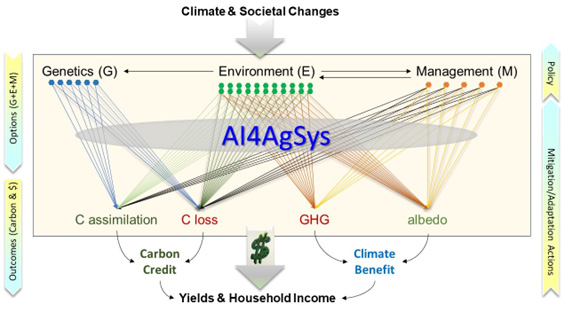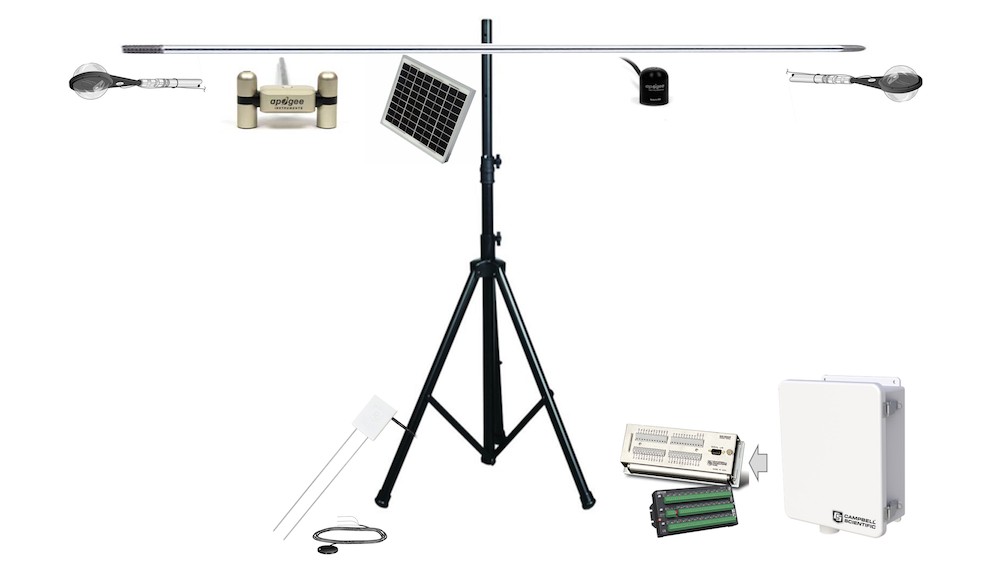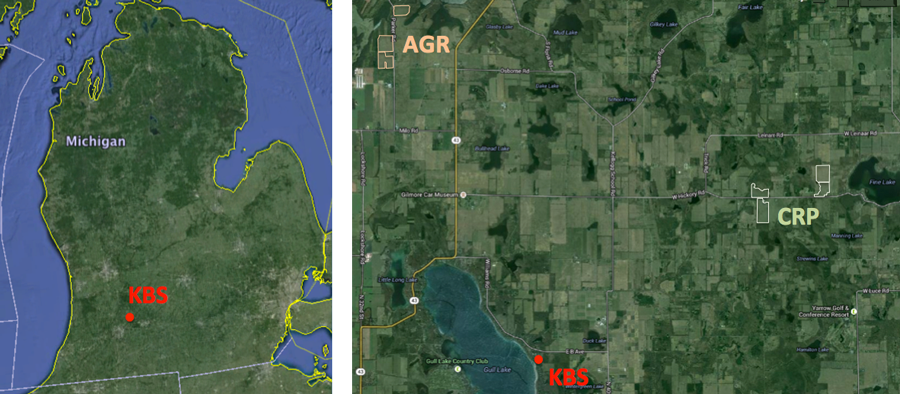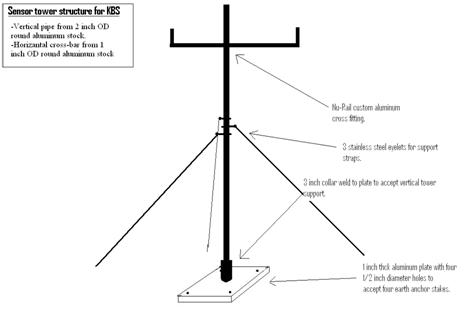Empowering Michigan Farmers: An AI-Based Forecasting and Management System for Building Resilient Agriculture (AI4AgSys)
AI4AgSys for Michigan Farmers (2025-)
Our overarching goal is to formulate solution-oriented strategies and outcomes, helping landowners and managers create inspirational actions that meet diverse objectives in a changing climate and society.This team from four colleges of MSU aims at co-development of an AI-based forecasting system for 4 major types of agricultural production systems (AI4AgSys) in Michigan: corn, soybean, wheat, and potatoes. AI4AgSys is a large-scale, pre-trained deep learning forecasting system that will be trained with massive, diverse datasets, using self-supervised learning and multi-task learning techniques, where the system learns by predicting parts of the data from other parts, thereby reducing the need for extensive labeled data. Our specific objectives are:
Obj. 1: Co-design, co-assessment, and co-applications of AI4AgSys through four engagement workshopsObj. 2: Constructing AI4AgSys that has two components: a mobile app and AI Foundation module;
Obj. 3: Developing rich geospatial time series databases supporting AI4AgSys; and
Obj. 4: Conducting field campaigns to collect needed data for AI4AgSys parametrization and validation at 30 farmlands in the southern part of Michigan’s Lower Peninsula.
Conceptual Framework

The proposed architecture of an AI-based forecasting system (AI4AgSys) to support climate-resilient agriculture through deep learning. This system will continuously enhance its predictive capabilities as additional data, knowledge, technology, and market insights become available. Initial testing of the framework will focus on rotational crops. Predicted outcomes for each [G+E+M] scenario will be standardized as net financial income ($), calculated from carbon credits and climate benefits. Lessons from conventional ecosystem/growth-yields models will be treated as ‘known knowledge’ and integrated through a ‘human-in-the-loop’ process, while all available geospatial, experimental, in situ observational, and remote sensing imagery, household surveys, and government statistics will be included for AI4AgSys training, learning, and testing.

Figure 3. Drone flights will be performed for the BCSE, scale-up, and MLE cropping systems. A DJI Matrice 100 will be outfitted with two pyranometers and two prygeometers (Apogeee Instruments), a Multispectral camera with 5 bands for calculating NDVI, LAI and vegetation coverage, and potentially a PUCK sensor (Velodyne) for measuring LiDAR.
Data
Bioenergy at the GLBRC (2008-2012)
We propose to use the eddy covariance (EC) method as our primary tool (see Chen et al. 2008) in making intensive, continuous measurements of NEP, water loss through evapotranspiration (ET) and energy balance at the six KBS-GLBRC “Scale-Up Fields”: switchgrass, restored prairie and continuous corn fields (two replicates of each system). A combination of dynamic chambers and microclimatic and biometric measurements will also be used to collect various needed data on soil C, resource use (water, light and N), carbon gain (photosynthesis) and loss (respiration) and changes in major biophysical variables as well as heat energy to achieve our study objectives.
We hypothesize that significant differences exist in ecosystem production, biophysical regulations and belowground carbon allocation among the three biofuel production systems. These differences are clearly reflected at multiple temporal scales.
The data and results produced from this study will be posted on an open Webpage in order to best promote their uses (e.g., modeling research of the Thrust 4 toward the missions of the DOE-BRC.
Objective 1:
Examine the magnitudes and dynamics of net ecosystem production (NEP) and soil C at the six “Scale-Up Fields” that have been identified at the Kellogg Biological Station (KBS).
Objective 2:
Investigate the biophysical regulations and resource use limitations for maximizing NEP and soil C at these sites.
Acknowledgements
Funded by the DOE
Conceptual Framework and Hypothesis
We hypothesize that significant differences exist in ecosystem production, biophysical regulations and belowground carbon allocation among the three biofuel production systems. These differences are clearly reflected at multiple temporal scales.

Figure 1. The Kellogg Biological Station in Hickory Corners, MI, and the two areas of research: Lux Arbor Reserve, agriculture (AGR) and Marshall Farms, conservation reserve program (CRP).

Figure 2. Location of the seven sites, which are spread between AGR and CRP, and their eddy covarience towers and crop type.

Figure 3. Layout and assembly of each sensor tower.
Data
Eddy Covarience Data
Kellogg Biological Station Data Table: Gap-filled net ecosystem exchange data from the University of Toledo Eddy Covariance towers (updated regularly), which is distributed through their network. The data here includes the original data and the gap filled data. Gap filling is done using a web application. Follow this link to help understand some of the output variables.
LEES data tables (2008-2009): Eddy Covariance flux and microclimate data provided in xls for 2008 and 2009.
Additional Data
- Soil Respiration: 2009, 2012 data in xls.
- Photosynthesis: 2009-2011 data in xls.
- Soybean Biome: Data from when the KBS field sites were converted from Soybean to current crop/field type.
- LIDAR data: 2008-2009 data sets and associated .emf images.
Additional information on our procedures can be found on our resources page.
Team Members
Name |
Role |
Contact |
|---|---|---|
| Dr. Jiquan Chen | Prof., PI | jqchen@msu.edu |
| Dr. Jeff Andresen | Prof., COI | andresen@msu.edu> |
| Dr. Christine Charles | Prof., COI | charl122@msu.edu |
| Dr. Sandra Marquart-Pyatt | Prof., COI | marqua41@msu.edu |
| Dr. Dennis Pennington | Prof., COI | pennin34@msu.edu |
| Dr. Molly Sears | Prof., COI | searsmo1@msu.edu |
| Dr. Jiliang Tang | Prof., COI | tangjili@msu.edu |
| Dr. Kurt Thelen | Prof., COI | thelenk3@msu.edu |
| Dr. Jie Dai | Research Associate | Daijie2@msu.edu |
| Dr. Dileepa Jayawardena | Research Associate | jayawar7@msu.edu |
| Dr. Jin Wang | Research Associate | wangj329@msu.edu |
| Xinnan Dai | PhD Student | daixinna@msu.edu |
| Zhenhai Liu | PhD Student | liuzhe35@msu.edu |
| Nurul Mujahid | PhD Student | mujahidn@msu.edu |
| Jay Revolinsky | PhD Student | revolins@msu.edu |
| Dr. others coming | Research Associate | xx@msu.edu |
Contact
Center for Global Change and Earth Observations
202 Manly Miles Bldg. 1405 South Harrison Road Michigan State University, East Lansing, MI 48823


